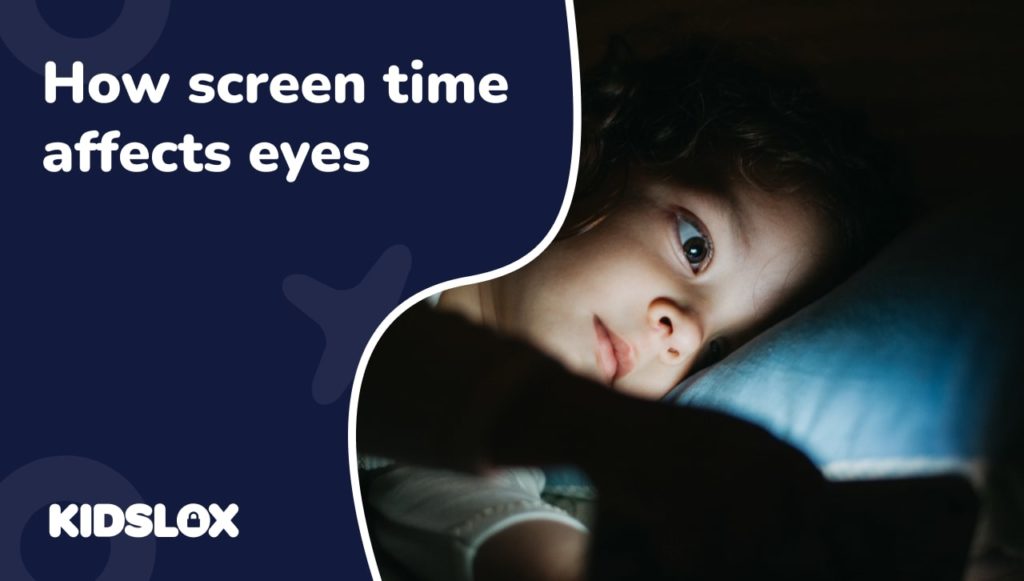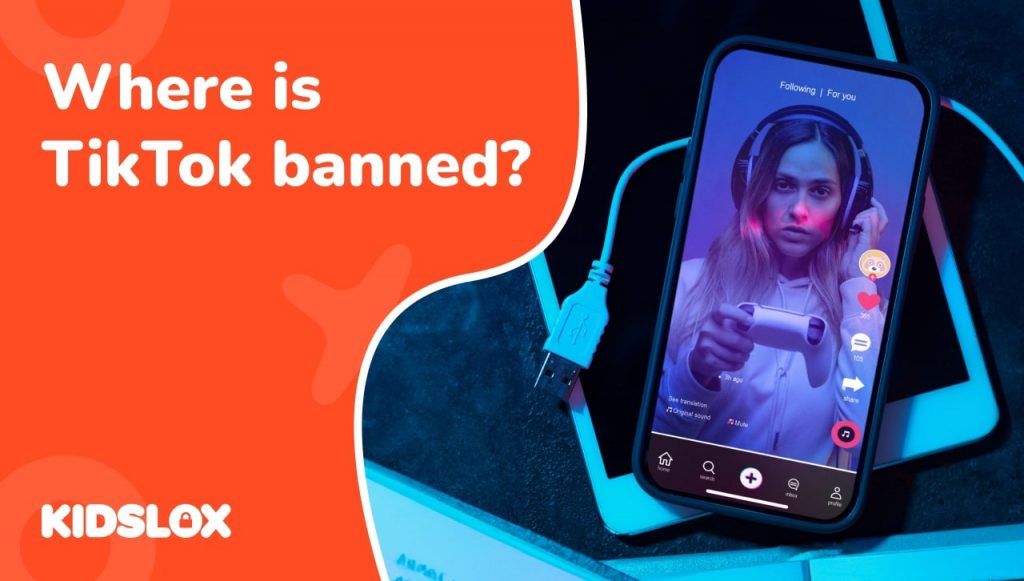Do you ever feel like your eyes are dry or sore after a long day working at the computer? Perhaps you’ve experienced double vision or headaches when you’ve not taken regular breaks? You’re not alone. It’s estimated that the average office worker spends 1,700 hours a year in front of a computer. Combining that with our ever-increasing reliance on digital devices, many people are asking important questions about whether too much screen time can damage our eyes.
Even more worrying is the potential damage that too much screen exposure could have on our childrens’ developing eyesight. With the lure of gaming consoles, YouTube videos, social media and more, children seem to be attached to their screens more than ever.
There are many reasons why your concern about screen time and eyesight is justified. In this article we explore more about the potential harm we could be doing to our eyes, what symptoms to look out for, and what preventative measures can we take to relax them after too much screen time.
Can children get Computer Vision Syndrome?
Excessive screen use is associated with symptoms of a phenomena that experts call Computer Vision Syndrome (CVS). And while it’s generally accepted that computers, tablets and phones probably won’t permanently damage your vision, they can cause some uncomfortable side effects. This can also often be referred to as ‘digital eye strain’.
Children are at risk of developing digital eye strain and other eye concerns associated with computer vision syndrome. Research carried out in the wake of the Covid 19 pandemic showed that rates of digital eye strain in children are increasing, and that public awareness of the effects of too much screen time on children’s eyes should be improved.
What effects does spending too much time in front of a screen have on our eyes?
- Headaches
A nagging headache after too much time in front of the computer can be down to eye strain. A combination of poor computer position, bad lighting or screen brightness settings can all contribute to you getting headaches after spending long periods at the computer.
- Blurred vision
Contributing factors to blurry vision after using the computer include a lack of definition on the characters, reduced contrast and reflections on your screen. Combined, these elements contribute to CVS by putting extra strain on your vision.
- Dry and irritable eyes
Experts believe that we don’t blink as much when we’re sitting at the screen, which can contribute to the feeling of dry and irritated eyeballs.
- Eyestrain
If you’ve experienced feelings of general discomfort in your eyes, dimmed vision or a headache, these are all signs of eye strain. Children who overuse screens often hold their devices too close to their eyes, which can contribute to eyestrain. If your kids have experienced painful eyes, headaches, tiredness and have lost interest in tasks like reading, too much screen time could be affecting their eyes.
- Neck and shoulder pain
When we’re at the computer, our posture can be neglected. We’re also limiting the amount of movement in our neck and shoulder by being fixed in one position for long periods of time. Over time this can cause additional problems, including neck and shoulder pain too.
So, are screens bad for kids’ eyes?
Research suggests that not spending enough time outside can impact the development of childrens’ eyes. It is believed that this is a result of missing out on the important role that natural daylight plays on the growing eye structures. It goes without saying that the more time we spend on screens, the less time we get to spend outdoors.
Studies have shown that less time outdoors is associated with increased risks of developing nearsightedness (myopia).
Alongside poor eye health, experts agree that there can sometimes be additional, undesirable outcomes associated with too much time in front of the screen, including problems with their attention span, which can impair their learning and healthy development.
The blue light that screens emit can also cause disturbances in childrens’ sleeping routines. Leave at least an hour between screen exposure and bedtime to avoid confusing the brain between day and nighttime.
How do you know if screens are damaging your eyes?
Digital eye strain, or CVS are relatively modern phenomena. As we spend more time than ever in front of our computers, tablets, TVs and phones, Research suggests that up to 90% of people who spend long periods of time at the computer will experience at least one symptom of CVS.
Why do these effects occur?
Most of our digital devices emit blue light and we’re more exposed to it than ever because of the widespread use of devices that rely on light-emitting diode (LED) technology. The sun emits blue light too,(much more than any device), but experts are concerned more about the proximity of our eyes to our devices in combination with that added exposure to blue light.
How to relax your eyes after long periods of screen time
There’s a golden formula that experts agree can help reduce the negative impact that screens can have on our eyes, 20-20-20-2 rule. If you’re worried that it sounds complicated, don’t be! Here’s it broken down.
20 – break focus from the screen (or any close to the eyes activity) every 20 minutes
20 – look at least 20 feet away – that’s about 6 meters!
20 – for at least 20 seconds
20 – and blink, 20 times!
2 – Try to spend at least 2 hours outdoors to help give your child the opportunity to focus on things at natural distances.
The 20-20-20-2 rule doesn’t just apply to children. Use it yourself to help protect your eyes from the tiring and painful effects of too much screen usage too.
How can I reduce eyestrain and relax my eyes after long periods of screen time?
You can do lots to relax your eyes and protect them from screen time damage. Try one of the following ideas.
Set your distance.
Make sure your computer screen is an arm’s length away from your face, not closer.
On the downlow.
The center of your screen should be around 15 degrees below your eye level.
Matte out.
Use a matte screen filter to help reduce the glare that can give you eye strains and headaches. You can find suitable ones for all types of devices.
Have a break.
We already talked about the 20-20-20-2 rule, but always make sure that you take a longer break every couple of hours. Get away from the screen completely and take a walk.
Cry it out
Use fake tears to freshen up your eyes when you start to feel the irritation. Speak to your pharmacist about which type is the best for you.
Lighten up!
Natural light is really important for all sorts of health benefits, but if you can’t get enough in your workspace, make sure you have enough ambient light around you so that your screen is never brighter than your surroundings.
Don’t skip your eye exam
Get regular eye exams and check-ups – even if you don’t wear glasses or think you need them.
And for kids? How can I protect my child’s eyes from the damage of too much screen time?
All of the above applies, including regular eye check-ups annually. The optician can check that your child’s eyes are developing as they should be and pinpoint any potential issues.
Sleep tight!
Ever noticed how your eyes can feel worse when you haven’t had enough sleep? The same goes for kids too. Keep phones, tablets and devices out of children’s sleeping spaces as much as you can and limit their exposure at least an hour before bed.
It’s time to play.
Get outdoors with your kids as often as you can to expose their eyes to things in natural contexts and distances. When they’re outside they’re not typically stationary either, and lots of active play and exercise is so important to their overall health and wellbeing, including eyesight.
Monitor their screen time
The American Academy of Pediatrics recommends no more than 2 hours a day of screen time for most school-age children. Work as a family to agree when, and what, devices are used and teach your kids about the importance of setting healthy limits and boundaries with their digital devices.
Most families wouldn’t be able to get rid of all the screens in their home, even if they wanted to. Screens are part of our modern life, getting around them is tricky. There are ways that you can help protect your children from the negative impact that computers, phones and tablets can have on them. Kidslox has lots of features to help promote harmony between family life and the digital world. From setting limits on the amount of hours your child can use their device, to blocking dangerous websites and helping to geolocate them when they’re not with you. Click here for more.





